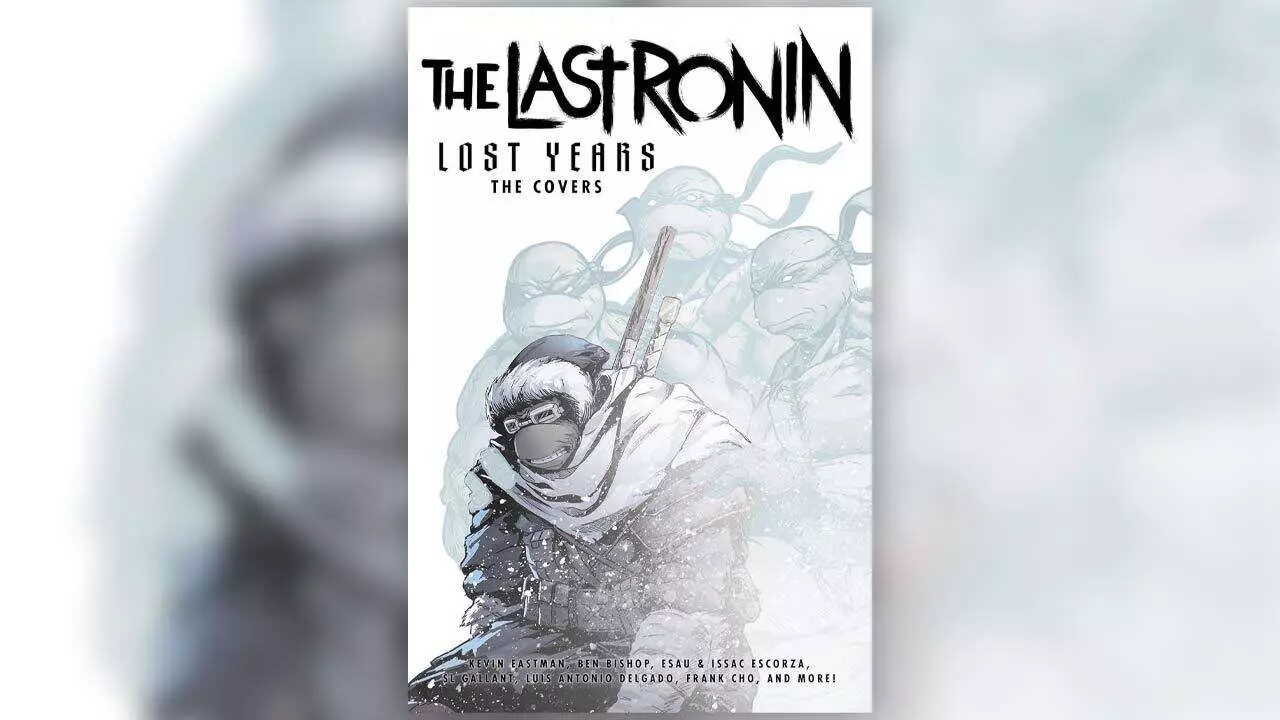The Teenage Mutant Ninja Turtles (TMNT) franchise has long since solidified its presence in popular culture, but few tales resonate with the depth and gravitas of “The Last Ronin.” This particular storyline not only reimagines classic characters but also paves a provocative pathway into darker themes rarely explored in the franchise’s previous iterations. For fans looking to delve deeper into this relentless saga, a new hardcover collection, “Teenage Mutant Ninja Turtles: The Last Ronin Lost Years – The Covers,” is now available for preorder, promising to enrich the lore of this iconic series.
Scheduled for release on November 19, the “Lost Years – The Covers” compilation showcases cover artwork from the prequel mini-series and is priced at $30. The anthology boasts contributions from renowned artists, including TMNT co-creator Kevin Eastman, who brings a nostalgic authenticity to the project. Acclaimed artists like Ben Bishop, SL Gallant, Gavin Smith, Mateus Santolouco, and many others also lend their exceptional talents, providing a diverse visual feast. With over 125 pieces included, this hardcover transforms itself into a virtual art gallery dedicated to the world of TMNT.
The rich visual realm presented through these covers not only celebrates the art but also gives insights into the themes and arcs explored in the “Lost Years” storyline. Nostalgia meets modernity, ensuring that this volume appeals to both longtime supporters of the TMNT saga and newcomers attracted by the recent resurgence in popularity. What makes this collection particularly enticing is its potential to evoke rich interpretations of narrative and emotional undertones often hinted at but not fully realized in mainstream TMNT storytelling.
Set in a bleak alternate universe, “The Last Ronin” presents a dystopian version of New York City where chaos reigns and only one Ninja Turtle remains alive. This sole survivor grapples with the weight of loss, vengeance, and the remnants of his shattered family. It explores themes of grief and resilience, encapsulating a deeper emotional spectrum that touches on both personal and collective struggles. The original graphic novel has achieved cult status, resonating with audiences due to its mature themes and rich character development, which sets it apart from the more light-hearted tales typically associated with the TMNT lineage.
Following the initial success of “The Last Ronin,” the sequel, “The Last Ronin – Lost Years,” aims to fill gaps in the storyline, providing context to the events that transpired before and after the main narrative. This ongoing exploration is a testament to the franchise’s ability to evolve and adapt, meeting the expectations of fans while also challenging the norms of storytelling within comic book culture.
Beyond “The Lost Years” collection, there’s a wave of new TMNT-related graphic novels hitting shelves. On November 12, two anthologies will be released: “Teenage Mutant Ninja Turtles: 40th Anniversary Comics Celebration” and “TMNT: Black, White, and Green.” Collectively, these works curate fan-favorite moments and previously released standalone stories, respectively, weaving a comprehensive tapestry that reflects the franchise’s development over its remarkable four-decade tenure.
Priced competitively—$18 for the anniversary edition and $22 for the “Black, White, and Green” compilation—these anthologies present extraordinary value for longtime fans and those newly initiated into TMNT lore. They serve as ideal entry points into the extensive TMNT universe, offering a diverse range of stories that appeal to different tastes and interests.
The IDW TMNT series stands as a significant reimagining of the franchise, heralding the arrival of fresh narratives while paying homage to the original characters. With 16 volumes published so far, it combines veteran stylings with innovative storytelling, ensuring that both long-term and novice fans find something to enjoy. The series is noteworthy for its intricate world-building and capable explorations of familiar dynamics, inviting readers to ponder the evolution of beloved characters in unexpected ways.
Ultimately, TMNT has demonstrated a remarkable ability to adapt and thrive through changing cultural landscapes. As it ventures further into compelling narratives, layered art, and thoughtful character development, both “The Last Ronin” and its related publications stand as vital chapters in a sprawling and ever-evolving mythos. Whether through high-stakes drama or whimsical escapades, the Teenage Mutant Ninja Turtles will undoubtedly continue to engage and inspire for years to come.

